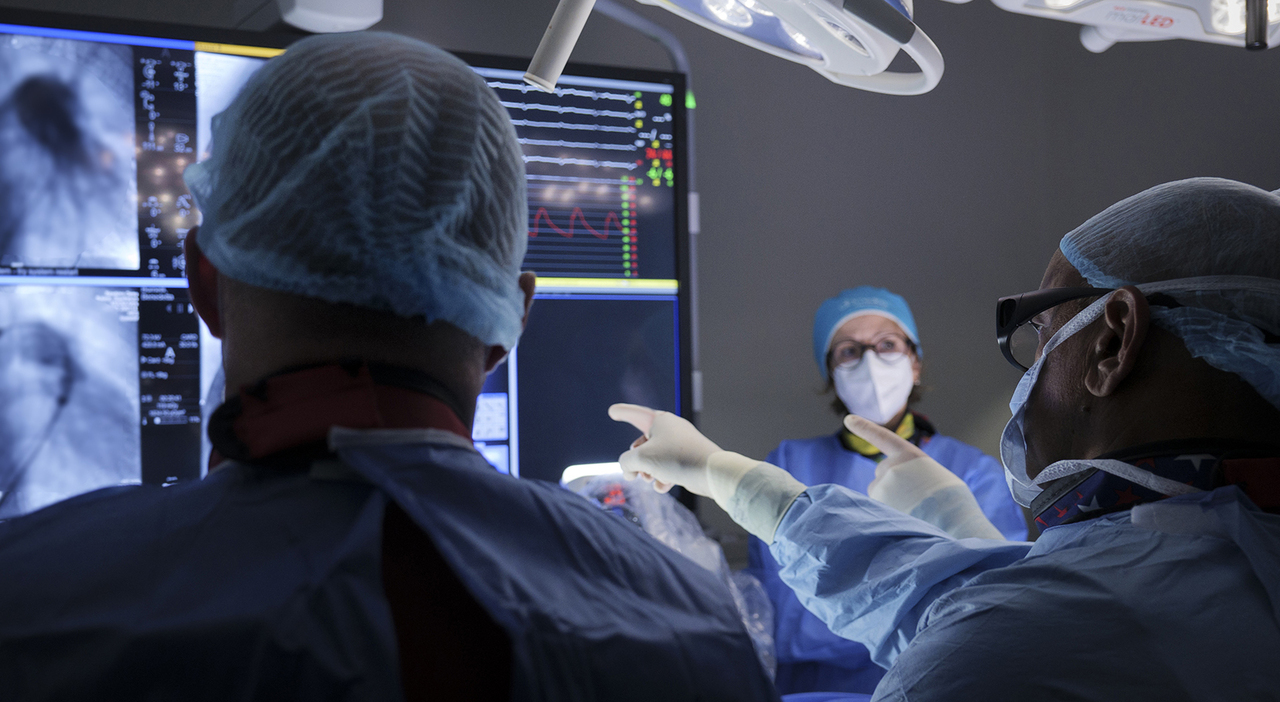For the first time in Italy a prosthesis was positioned without operating on an open heart, and therefore without a scalpel. It is a life saving intervention carried out at the Bambino Gesù Pediatric Hospital on a 21-year-old patient with severe pulmonary stenosis, a severe malfunction of the pulmonary valve which regulates the exchange of blood and oxygen between the heart and lungs.
Rome, life-saving surgery on a patient who could not be operated on with an open heart
The condition of the girl, unable to sustain open heart surgery, made it necessary to appeal for compassionate way to an innovative transcatheter device, used for the first time in Italy but not yet authorized in Europewhich facilitates endoscopic placement of pulmonary valve prostheses in patients with severe congenital heart disease.
The surgery was successfully performed by the Child Jesus Interventional Cardiology Unit, directed by Dr. Gianfranco Butera.
The patient is doing well and was discharged just 2 days after the procedure was performed.
Followed from an early age to the Child Jesus for severe pulmonary stenosis, the patient could neither be subjected to open heart surgery nor to that of traditional transcatheter valves.
Mitral valve surgery with a beating heart: it is the first time in the world in an emergency
The specialists of the Interventional Cardiology Unit have therefore evaluated the implantation of a new latest generation transcatheter device, already in use for some years in the United States but not yet authorized in Europe, which required the green light from the Ministry of Health for compassionate use.
What does compassionate use mean?
Compassionate use is a use that is permitted in some specific cases. Recourse to the so-called “compassionate use” (Ministerial Decree of 7 September 2017) is envisaged for a medicinal product or medical device not yet authorized in Europe, as in this case, or subjected to clinical trials, outside of the trial itself, in patients with from serious or rare or life threatening diseases, when your doctor decides that there is no alternative.
The full use of this new transcatheter device, when possible, will therefore allow for treatment a wider audience of patients with congenital heart disease today destined for the scalpel due to extensive dilatation of the right outflow.
The new hourglass-shaped device
«It is a system (Alterra Adaptive Prestent) made up of two components – explain the doctors of the Child Jesus – The first is a self-expanding metal stent, which acts as a reducer of the diameter of the dilated right outflow. A sort of conduit to shape of ‘hourglass’ which provides the support base for the second component, a standard pulmonary valve. Thanks to this system it is possible to intervene endoscopically even in the case of dilatation of the right outflow up to 42-44 millimeters, against the maximum 29 millimeters that can be managed with traditional transcatheter devices».
Hypnosis in the operating room, surgery at the Niguarda in Milan to replace the aortic valve
«The possibility of a procedure after which you can go home in 2-3 days – says Butera – it is an important result in terms of the patient’s experience who is subjected to less physical and psychological stress than open heart surgery. And it also represents an advantage for the National Health Service due to the lower commitment of resources ».
Pulmonary valve that does not work: what happens
In a healthy heart, the pulmonary valve – located between the right ventricle and the pulmonary artery – opens to allow blood to proceed to the lungs for oxygenation and then closes, to prevent it from flowing back along the right outflow channel. In patients with certain congenital heart defects (most cases of pulmonary stenosis or tetralogy of Fallot) this hinge function is impaired.
Thus occurs a pulmonary regurgitation phenomenon, a partial reflux of blood that can usually be resolved with the placement of pulmonary valve prostheses through open heart surgery or, when possible, endoscopically. In this way the correct functionality of the heart is re-established.
Endoscopic implantation – preferable due to the lower physical and psychological stress caused to the patient – can be hindered or prevented by the irregular morphology of the right outflow, which can present excessive dilatation due to previous surgical interventions or other factors. And this is the case of the 21-year-old patient following the Child Jesus: neither the path of open heart surgery, nor that of the traditional transcatheter valves were viable for her.
